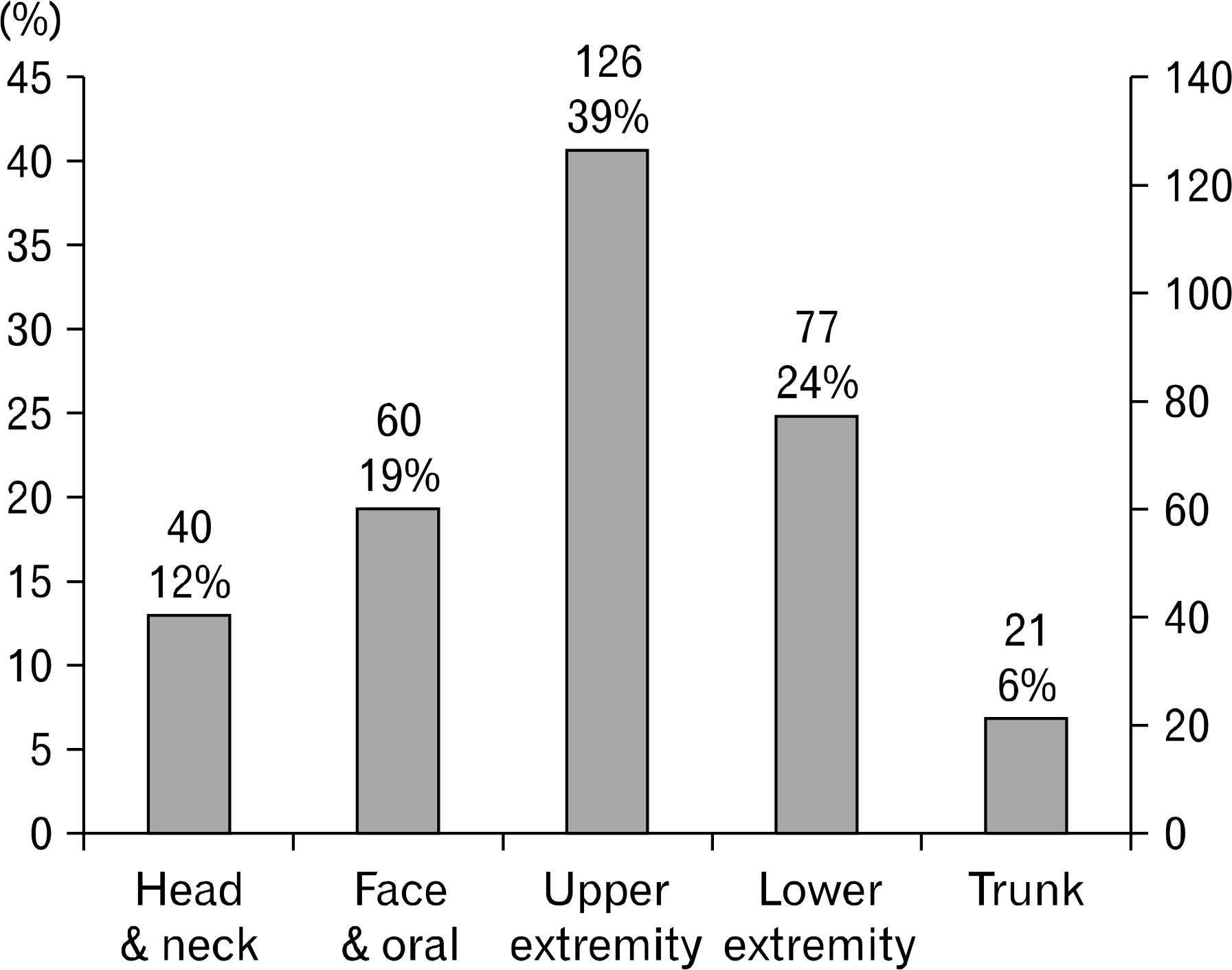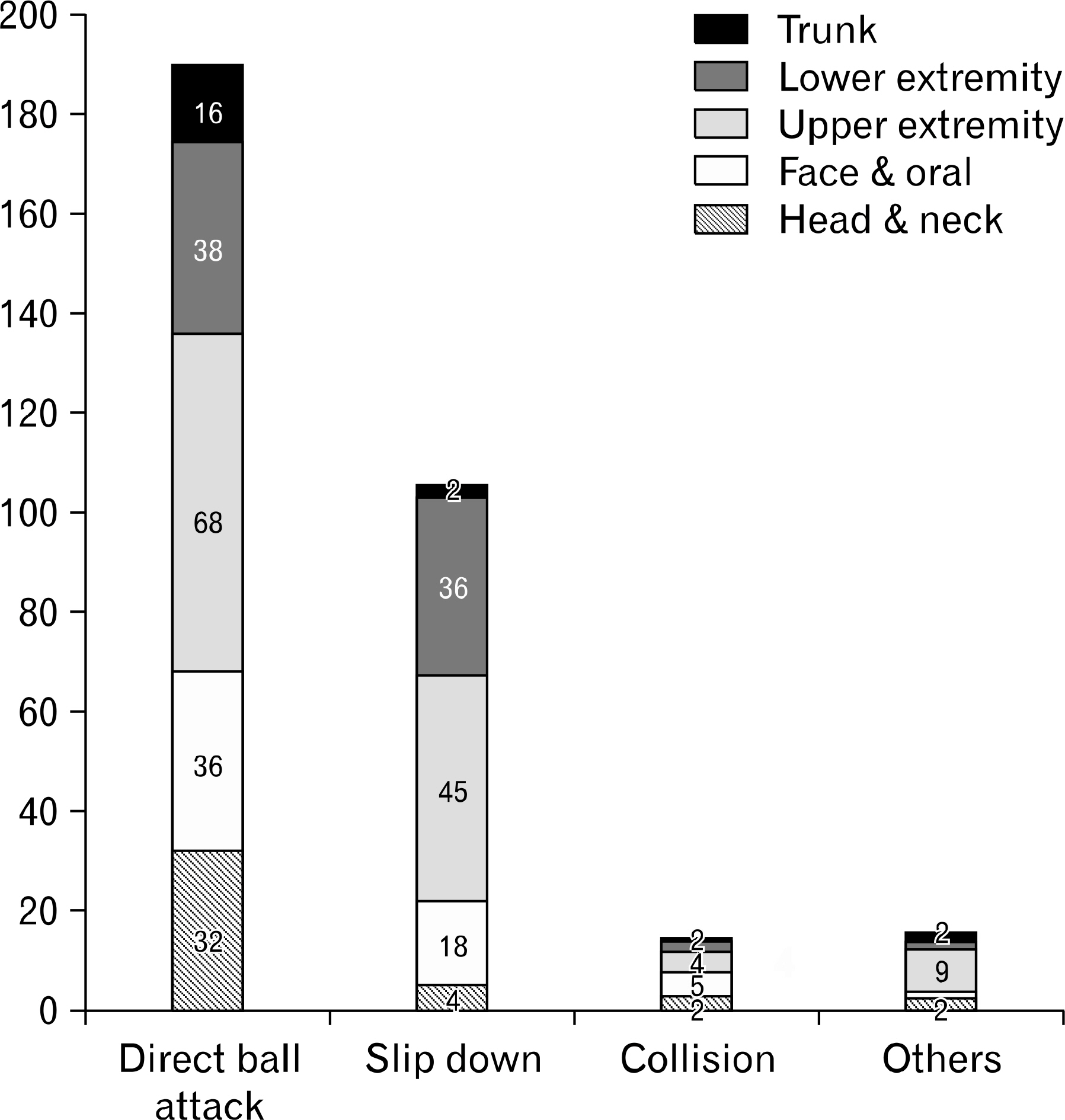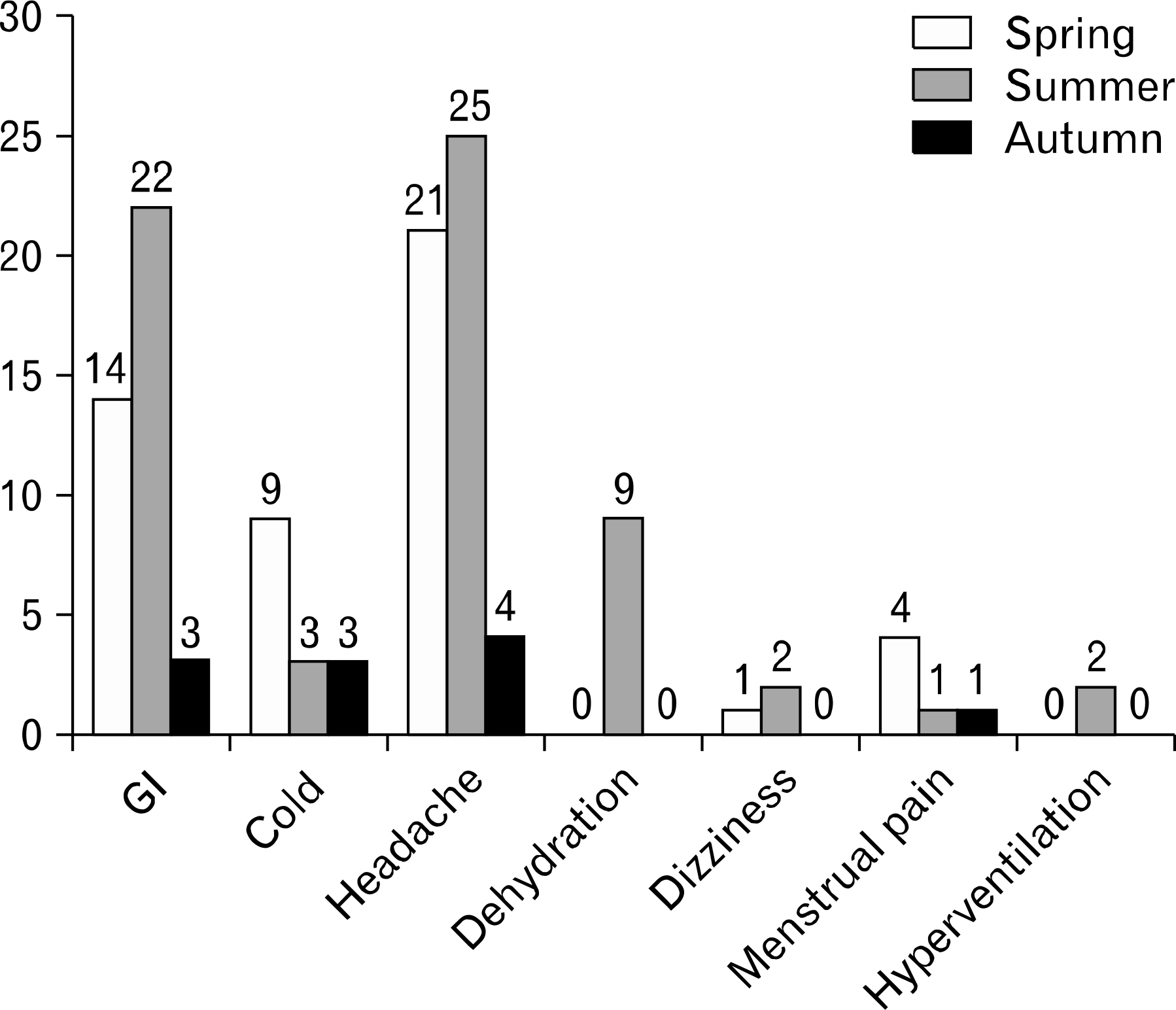Korean J Sports Med.
2015 Jun;33(1):6-12. 10.5763/kjsm.2015.33.1.6.
The Epidemiology of Spectator Injury and Illness in the Korean Professional Baseball League: 2 Consecutive Seasons (2011-2012) at the Jamsil Stadium
- Affiliations
-
- 1Department of Orthopedic Surgery, Seoul National University Bundang Hospital, Seoul National University College of Medicine, Seongnam, Korea.
- 2Department of Orthopedic Surgery, Myongji Hospital, Goyang, Korea. doctoryub@naver.com
- KMID: 2054035
- DOI: http://doi.org/10.5763/kjsm.2015.33.1.6
Abstract
- The aim of this study was to verify the epidemiology of spectator injury and illness in the baseball stadium during the games and the role of the on-site physician in hospital referral of spectators. We retrospectively reviewed the 'Documents of the medical aids' from 2011 to 2012 at Jamsil stadium. We have provided medical consultation to spectators as on-site physicians since 2012. The incidence of spectator injury and illness was 0.009% (1.68 spectators/game). During the study period, a total 448 spectators visited the first aid station, of which 324 cases (72%) were injuries and 124 cases (28%) were illness. The most common cause of injury was direct foul ball attacks (58.6%). According to the location of injuries, upper extremity injuries were most common, however, severe injury cases that were immediately referred to the hospital by ambulance were more commonly facial and oral injuries (p=0.000). Severe injuries occurred more frequently in games on weekends than weekdays (p=0.000).Headache was the most common illness followed by gastrointestinal problems. Hospital referrals were more frequent in the 2012 season when we were designated on-site physicians, as compared to the 2011 season (p=0.035).
MeSH Terms
Figure
Reference
-
1.Michael JA., Barbera JA. Mass gathering medical care: a twenty-five year review. Prehosp Disaster Med. 1997. 12:305–12.
Article2.Milsten AM., Maguire BJ., Bissell RA., Seaman KG. Mass-gathering medical care: a review of the literature. Prehosp Disaster Med. 2002. 17:151–62.
Article3.Baker WM., Simone BM., Niemann JT., Daly A. Special event medical care: the 1984 Los Angeles Summer Olympics experience. Ann Emerg Med. 1986. 15:185–90.
Article4.Allen TL., Jolley SJ., Cooley VJ, et al. The epidemiology of illness and injury at the alpine venues during the Salt Lake City 2002 Winter Olympic Games. J Emerg Med. 2006. 30:197–202.
Article5.Thompson JM., Savoia G., Powell G., Challis EB., Law P. Level of medical care required for mass gatherings: the XV Winter Olympic Games in Calgary, Canada. Ann Emerg Med. 1991. 20:385–90.
Article6.Korea Baseball Organization. The document of KBO [Internet]. Seoul (KR): Korea Baseball Organization;c2015. [cited 2015 May 8]. Available from:. http://www.koreabaseball.com/History.7.Ishikawa H., Hori S., Aikawa N. The incidence of sickness/trauma in spectators of professional baseball at the Meiji Jingu Baseball Stadium. Keio J Med. 2007. 56:85–91.
Article8.Nicholls RL., Elliott BC., Miller K. Impact injuries in baseball: prevalence, aetiology and the role of equipment performance. Sports Med. 2004. 34:17–25.9.McCaffery M. Preparing for the worst: medical services at the Calgary Olympics. CMAJ. 1988. 138:151–3.10.Buns LS., Ellison PA. First aid and emergency care at a major-league baseball stadium. J Emerg Nurs. 1992. 18:329–34.11.Pons PT., Holland B., Alfrey E., Markovchick V., Rosen P., Dinerman N. An advanced emergency medical care system at National Football League games. Ann Emerg Med. 1980. 9:203–6.
Article
- Full Text Links
- Actions
-
Cited
- CITED
-
- Close
- Share
- Similar articles
-
- Nonsimultaneous Bilateral Internal Oblique Muscle Rupture in a Professional Baseball Batter: A Case Report
- Little Leaguer Shoulder with Contralateral Thrower's Fracture of the Humerus in Adolescent Baseball Pitchers
- Preseason Assessment for Throwing Shoulders in Korean Professional Baseball League Pitchers and Factors Affecting Kerlan-Jobe Orthopaedic Shoulder and Elbow Scores
- Sonoelastography on Supraspinatus Muscle-Tendon and Long Head of Biceps Tendon in Korean Professional Baseball Pitchers
- Temperamental Predictive Factors for Success in Korean Professional Baseball Players






